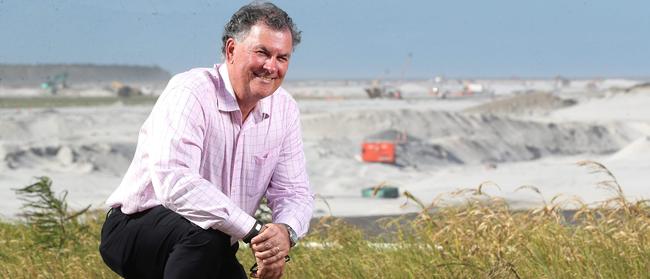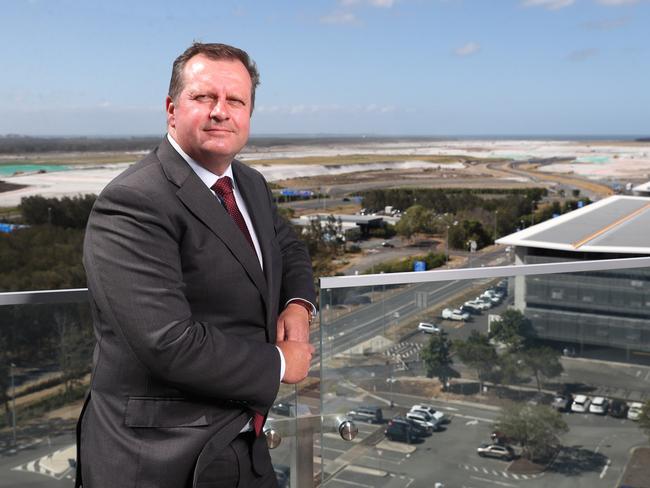How the new $1.3b Brisbane Airport runway will change the city
It’s costing about $1 million a day to build, employs 600 people and has consumed 16 years of one man’s life. Take a look behind the scenes of Australia’s largest aviation project.
QBM
Don't miss out on the headlines from QBM. Followed categories will be added to My News.
It’s only midafternoon but Paul Coughlan has already burned through a million dollars of Brisbane Airport’s hard-earned cash for the day.
The 58-year-old civil engineer from Rockhampton, in charge of the airport’s $1.3 billion parallel runway project, says a cool million is needed each day to keep the bulldozers, trucks and an estimated 600 workers busy on Australia’s largest aviation project.
“My wife keeps joking that it is taking a long time to build what she calls a ‘road’,” says Coughlan, who has been involved in the project since 2004.
By the time the first 400-tonne aircraft lands on the “road” in the middle of next year it will have consumed more than 16 years of Coughlan’s life as well as 1.2 million tonnes of rock, 11 million cubic metres of dredged sand and 100,000 tonnes of asphalt.
Coughlan, who hails from a family of engineers, says it took almost a decade of environmental studies and planning before construction work began in 2012.

Tonnes of sand had to be first pumped on to the site and allowed to settle for up to three years to form the foundation layer of the runway.
“In some areas, the sand has settled up to three metres,” Coughlan says as he steers an airport vehicle around huge Caterpillar dump trucks moving dirt along a road adjacent to the new runway.
“Additional sand was laid on the top as a weight in a process that is a bit like wringing out a wet sponge.”
That additional sand is now being removed from the runway to form the foundation for planned new terminal buildings. When the final layer of asphalt is laid in the next couple of months, the runway will be 3.2m thick, including 2.5m of compacted sand, 60cm of rock and 12.5cm of bitumen.
An on-site cement batching plant is currently pumping out 4000 cubic metres of cement a week that will form taxiways and buttress each end of the runway.
Workers also are in the process of laying 200km of conduit on the site to carry fibre-optic cabling for lighting and communication. There eventually will be more than 2000 runway lights and 16km of drainage conduits.
Brisbane Airport Corporation chief executive Gert-Jan de Graaff says the new runway will bring the city into the aviation big league, with a similar capacity to Singapore and Hong Kong airports.

“We currently have the capacity to handle 50 aircraft movements an hour but with the new runway we can increase that to over 100,” says de Graaff, a veteran airport executive who recently returned to Brisbane after a stint running Terminal 4 at New York’s JFK International.
He says that while the extra capacity will not be needed immediately, it will eventually be required as the city’s aviation links expand. The airport currently serves about 25 million passengers a year travelling to 50 domestic and 35 international destinations.
“We realised that a second runway was needed to set ourselves up for the future,” de Graaff says. “The city is growing and the aviation industry is growing, so we need the capacity. The best airports are those with healthy home markets. We have population growth in southeast Queensland, an affluent populace and we also are attractive to tourists.”
He says that when he was employed by Amsterdam Airport Schiphol in the Netherlands in the 1990s it was about the same size as Brisbane is now. “It now has about 60 million passengers a year.”
Coughlan says there is a symbiotic relationship between the runway project and other major construction projects under way across the city.
“It has given people like the developers of the Queen’s Wharf project the confidence to invest in the city,” he says.



